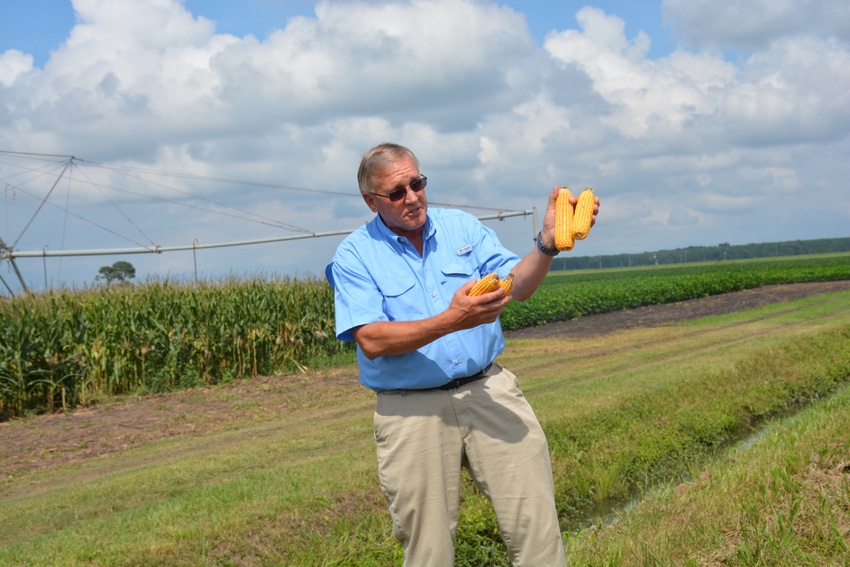
At North Carolina’s Tidewater Research Center in Plymouth, researchers are using ESN Smart Nitrogen, a controlled release fertilizer that uses a flexible, polymer coating to encapsulate a nitrogen granule.The coating protects the nitrogen from loss mechanisms, releasing it when the crop needs it most.

To increase yields, researchers encourage farmers to use 4R nutrient stewardship where fertilizer is applied in the right source at the right rate at the right time and right place. In North Carolina, nitrogen fertility is an important focus where scientists are seeking methods to increase production in the various soil types across the state.
At North Carolina’s Tidewater Research Center in Plymouth, researchers are using ESN Smart Nitrogen, marketed by Agrium, as part of their nitrogen fertility work. ESN is a controlled release fertilizer that uses a flexible, polymer coating to encapsulate a nitrogen granule. The coating protects the nitrogen from loss mechanisms, releasing it when the crop needs it most.
Ron Heiniger, North Carolina State University Extension corn specialist, is conducting ESN nitrogen fertility research at the Tidewater Center on corn, sorghum and wheat. He discussed his research at a field day at the Tidewater Center on Aug. 5.
“It is absolutely true; ESN is a controlled release product. The release curve has been verified by our research. It releases up to 60 or more days before it releases all of that nitrogen,” Heiniger says.
For wheat, Heiniger points out, nitrogen should be applied when temperatures are warm because wheat only grows when it has the right temperature. “ESN has this temperature response and releases when it’s warm and when it’s needed,” Heiniger says.
An advantage of ESN is that supplies nitrogen when temperatures warm up which allows leaf development in wheat to keep growing. In his research, Heiniger used a 50/50 blend of ESN and ammonium sulfate in his wheat plots. Heiniger says research shows that this combination increases tillers and leaf production. The combination should be applied between mid-January to mid-February to build tiller numbers.
For corn, finding a way to get nitrogen to the plant when it needs it is critical. Heiniger says ESN is beneficial because it supplies a small immediate release of nitrogen at the beginning and then continues release when it is needed more.
Sandy Stewart, a cotton physiologist and the director of the Research Station Division of the North Carolina Department of Agriculture & Consumer Services, is working with cotton research at the Tidewater Center. He says the controlled release of ESN makes sense in cotton because the technology releases nitrogen when it’s needed most. Stewart says often times cotton farmers apply fertilizer before the crop has a large need for fertilizer nitrogen.
Many times cotton is fertilized in the first 30 to 40 days after planting, when research shows that nitrogen is needed most 40 to 100 days after planting. ESN could fit well in cotton because it releases nitrogen when it is needed and not before, Stewart points out.
“With cotton, it’s important to understand that day in and day out you are dealing with a perennial shrub and managing it to grow in annual row crop environment. If you can remember this, then something like ESN where you apply nitrogen on that plan and have a controlled release curve makes sense,” Stewart says.
Alan Blaylock, manager of agronomy for Agrium, explains that the unique polymer coating of ESN releases nitrogen on the two requirements for crop growth: moisture and temperature. Moisture creates a nitrogen solution inside the coating and the solution moves through the coating at a rate based on soil temperature.
In essence, ESN spoon feeds the crop. “When the soil is cold, release is slower. When the crop is going slower and it doesn’t need much nitrogen, ESN is releasing more slowly. As it heats up, that crop is going to grow faster so ESN responds by releasing nitrogen at a faster rate,” Blaylock says.
About the Author(s)
You May Also Like





